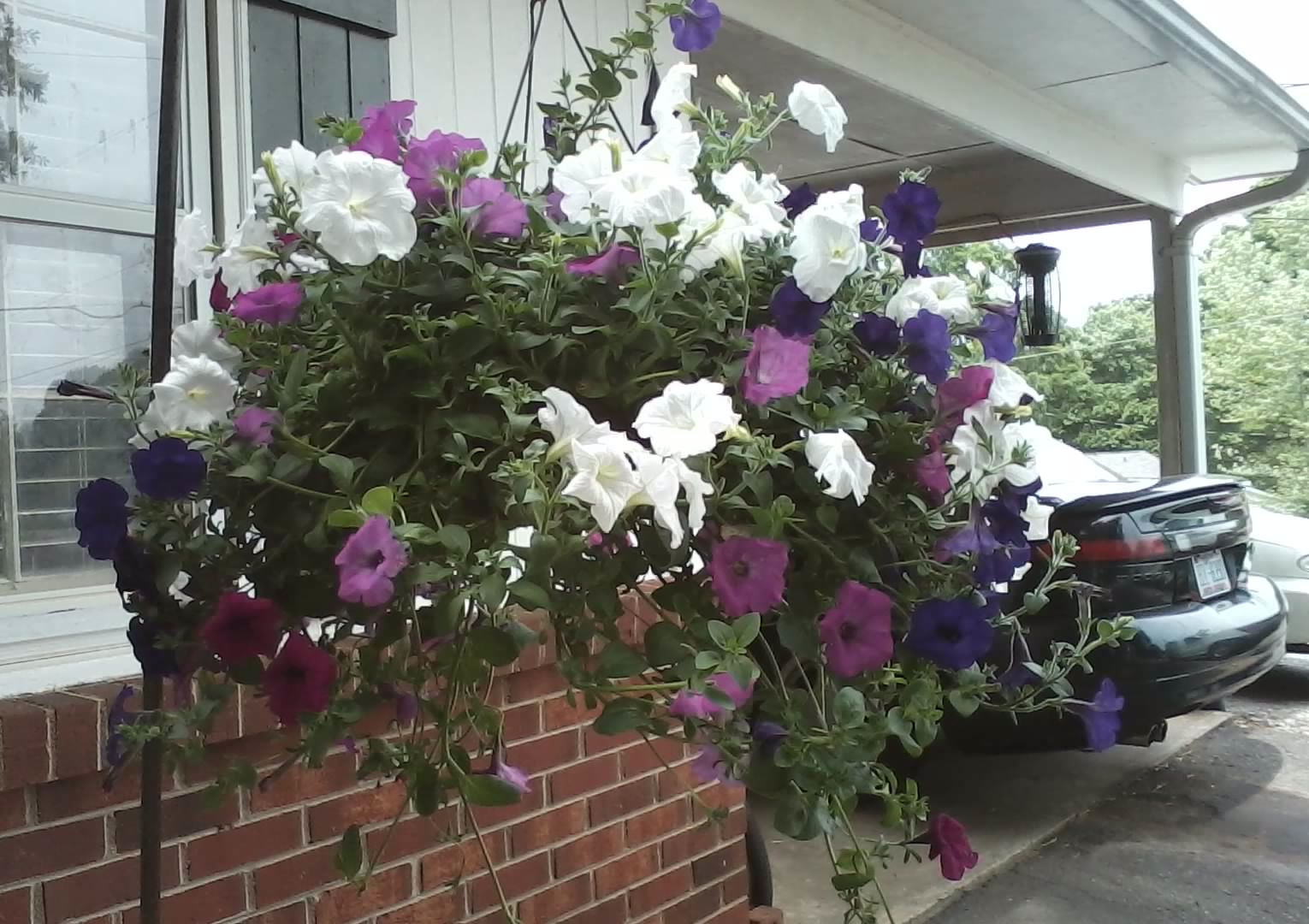Hanging Petunia Plants: Tips On Caring For Petunias In Hanging Baskets


If you’re not sure what to plant in your hanging baskets, you can’t go wrong with hanging petunia plants. With only a bit of effort on your part, petunias will reward you with masses of bright color all summer. Want to learn how to grow petunias in hanging baskets? Read on!
Planting Petunias in Hanging Baskets
Petunias are perfect for locations exposed to full sunlight. Look for cascading petunias, which include any variety that produces flowers on long, flowing stems. Planting petunias in hanging baskets is a cinch, as long as you use a sturdy container with at least one drainage hole. Fill the container with a lightweight commercial potting mix, which will promote healthy drainage. Never use garden soil, which quickly becomes compacted and too heavy for proper drainage. Mix a slow-release fertilizer into the potting soil at planting time.
Caring for Petunias in Hanging Baskets
Watering is critical when it comes to caring for petunias in hanging baskets. How often to water petunias in a hanging basket? This is a common question, and the answer is simple: water whenever the top couple of inches of soil feels dry to the touch. Hanging petunia plants may need water daily during the summer, and maybe even twice during periods of extreme heat. Water deeply, then let the pot drain. Never allow the soil to remain continually wet, as your petunias are likely to rot in soggy conditions. If possible, water the soil and not the foliage, as wetting the leaves can promote fungal disease. Feed petunias every week, using a water-soluble fertilizer formulated for flowering annuals. This, in addition to the slow-release fertilizer added at planting time, will ensure that the petunias have ample nutrients to sustain blooming all season. Remove wilted flowers as soon as they fade; otherwise, the plant will go to seed and stop blooming early. Cut petunias back by about half if they look tired and scraggly in midsummer. The rejuvenated plants will soon return with a burst of fresh blooms.
Gardening tips, videos, info and more delivered right to your inbox!
Sign up for the Gardening Know How newsletter today and receive a free copy of our e-book "How to Grow Delicious Tomatoes".

A Credentialed Garden Writer, Mary H. Dyer was with Gardening Know How in the very beginning, publishing articles as early as 2007.
-
 Try The Trend – Turn Any Bed Into A Keyhole Garden With This Clever In-Ground Composter
Try The Trend – Turn Any Bed Into A Keyhole Garden With This Clever In-Ground ComposterKeyhole gardening is an efficient and sustainable practice that saves space. Get started on this DIY project quickly and easily with an in-ground composter.
By Bonnie L. Grant
-
 4 Superfast Composting Methods: Turn Waste Into Garden Gold In 30 Days Or Less
4 Superfast Composting Methods: Turn Waste Into Garden Gold In 30 Days Or LessTry the fastest composting methods to turbocharge your pile and transform kitchen scraps and garden waste into finished compost in just a few weeks.
By Mary Ellen Ellis